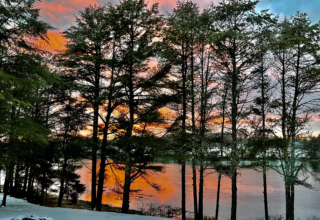
There are innovative ways in which this second way of generativity is expressed. For example, we know several insightful leaders in American higher education who make effective use of senior level executives who are on a leave-of-absence from their corporations. They teach for a term or two in the college’s business school or liberal arts program, and many of these executives are in late midlife. They thrive in educational and training settings that allow them to teach and reflect on learning they have accumulated over the years. (Bland and Bergquist, 1998) In a way, they are “saved” by the college or university by serving as counterparts to King Arthur’s young boy or George’s angel-in training.
Often our generative interests in collaboration and teaching are melded into a single plan. We co-teach with someone who is younger or less experienced. We invite a younger colleague to join with us in consulting another organization or within our own organization. These can be some of the most enjoyable and gratifying encounters that we will experience. It doesn’t matter if it’s teaching about woodwork with a younger colleague at a local community center, coaching boys and girls on a little league team, coordinating a technical training program for line supervisors in a company, or conducting weekly case conferences with new associates in a law firm. It’s all about generativity.
When in a state of stagnation, we tend to isolate the younger generation, often viewing young people as rivals and potential usurpers of the throne. When in a state of generativity, we welcome the younger generation and help to prepare them for new leadership. We are reminded of a trip we took to the French Quarter in New Orleans many years ago. We went to Maison Bourbon to hear Wallace Davenport, a legendary jazz musician. While Davenport was playing, “racket” (hard rock music) from across the street was invading the beautiful soulful sounds of his quartet.
We went up to Davenport after his set was finished and commented negatively about the quality of music coming from across the street. Davenport cut us off and declared with considerable passion that hard rock music was the future and he was very glad it was there, across the street. Davenport could have resented the intrusion and competition. Instead, he chose to be generative and embrace and support the new music. We were curmudgeons—not Davenport! We find much of the same attitude among the musicians portrayed in the remarkable post-Katrina TV series called Treme.
Generativity Three
There is a third way in which generativity is expressed, what George Vaillant (2012, p. 155) identifies as guardianship: “Guardians are caretakers. They take responsibility for the cultural values and riches from which we all benefit, offering their concern beyond specific individuals to their culture as a whole; they engage a social radius that extends beyond their immediate personal surroundings.” Their domain of concern is no longer just their family, their organization, or even their community.
They now care about the more fundamental legacies in their life and engage this caring through their wisdom and integration of soul and spirit. While this third way to express generativity can be identified as a form of resistance to change, or as an overdose of nostalgia, it also can be seen as an expression of deep caring for that which remains valid in contemporary times and which continues as a source of wisdom regardless of its date of origin or the quaint way in which it is stated, painted, or sung.
Generativity Four
Generativity is to be found in yet a fourth way. We witnessed this when we conducted a two-year research project on Community Sage Leadership in Western Nevada County, California. Fifty men and women (ages 25-55) were identified as emerging sage leaders and interviewed in-depth on the same set of key life questions. Another fifty men and women (ages 56-90) from the same communities (Grass Valley and Nevada City, CA) were identified as senior sage community leaders and also were interviewed on these questions.
Download Article














